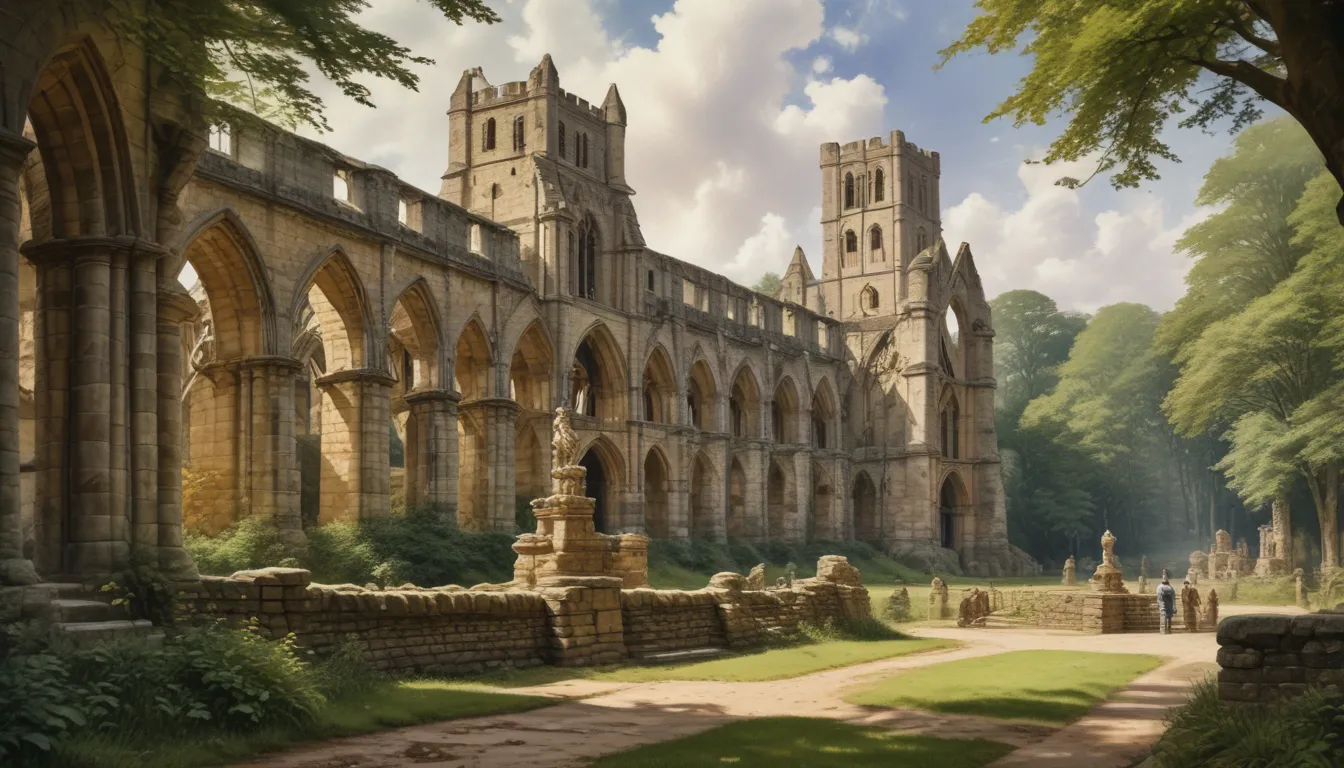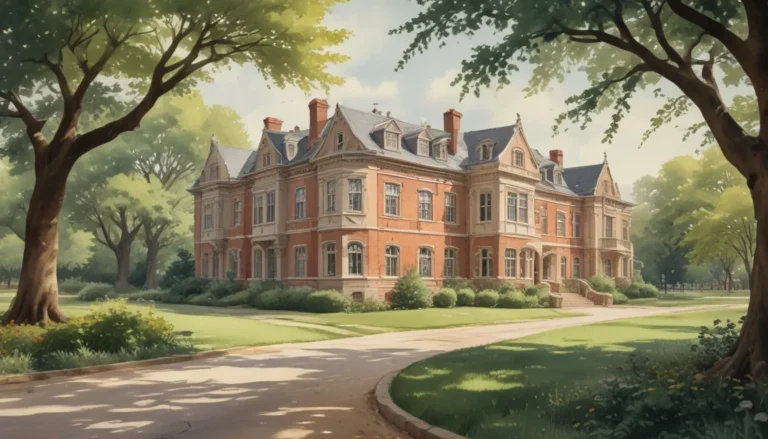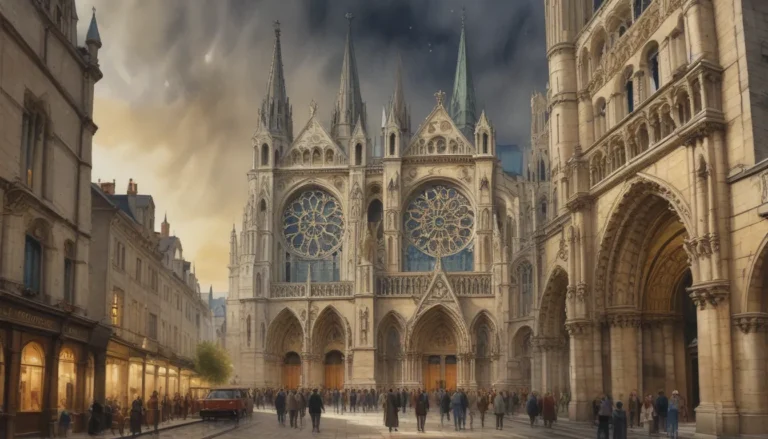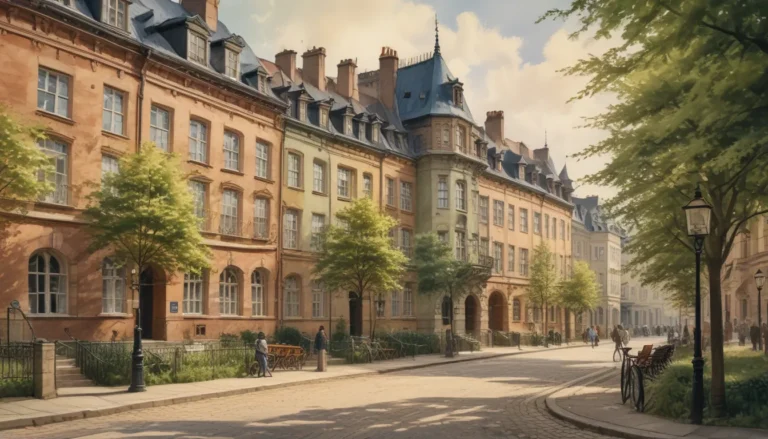The images in our articles are for illustrative purposes only and may not exactly match the content. They are intended to capture your interest and complement the text, not to replace it.
Fountains Abbey, nestled in the picturesque landscapes of North Yorkshire, England, stands as a testament to architectural brilliance and medieval history. This UNESCO World Heritage Site beckons visitors to step back in time and discover the captivating tales hidden within its ancient walls. Let’s embark on a journey through the history and allure of Fountains Abbey, delving into 14 fascinating facts that highlight its significance and charm.
A Glimpse into History
Founded in 1132 by a group of Cistercian monks, Fountains Abbey has withstood the test of time, offering a captivating insight into medieval life and religious devotion. For over 400 years, it thrived as a symbol of the Cistercian monastic order before facing dissolution during the English Reformation in 1539.
Marvelous Ruins
The awe-inspiring ruins of Fountains Abbey showcase remarkable architectural craftsmanship, providing a window into the past and inviting visitors to imagine the bustling life of the monastery in its heyday.
A UNESCO World Heritage Site
Designated as a UNESCO World Heritage Site along with the adjacent Studley Royal Park, Fountains Abbey is revered for its cultural significance and universal value, attracting visitors from around the globe to admire its grandeur.
The Abbey Church
The Abbey church, with its towering walls and stunning Gothic architecture, stands as an architectural masterpiece of the medieval era, reflecting the power and influence of the Cistercian order in medieval Europe.
Tranquil Surroundings
Surrounded by serene water bodies, lush gardens, and picturesque landscapes, Fountains Abbey offers visitors a peaceful escape from the hustle and bustle of modern life, allowing them to reconnect with nature and history.
The Enchanting Cloister
Within the Abbey lies a tranquil cloister, an enclosed courtyard that served as a place of contemplation and reflection for the monks. Its intricate architectural details continue to mesmerize visitors, transporting them back in time.
Monastic Life
Home to a community of Cistercian monks who followed the Rule of St. Benedict, Fountains Abbey was a hub of prayer, work, and self-sufficiency. The monks lived in accordance with strict rules, dedicating their lives to God and communal living.
The Water Garden
The Studley Royal Water Garden, created in the 18th century, adds to the allure of Fountains Abbey with its serene ponds, cascading waterfalls, and beautifully landscaped grounds, enhancing the site’s natural beauty.
Dissolution and Decline
During the Dissolution of the Monasteries under King Henry VIII, Fountains Abbey fell into ruin as valuable assets and lands were seized by the crown, leaving behind a hauntingly beautiful reminder of its former glory.
Inspirational Legacy
Throughout history, Fountains Abbey has inspired artists, writers, and poets, who have immortalized its ruins and surroundings in paintings, poems, and literary works, capturing the essence of this remarkable landmark.
Visitor Experiences
Today, visitors can explore the vast grounds of Fountains Abbey, participate in guided tours, and attend special events and performances that bring its history to life, offering a unique and immersive experience for all ages.
Sanctuary of Reflection
Amidst the tranquil beauty of nature and echoes of the past, Fountains Abbey serves as a sanctuary for solitude, reflection, and a deep connection with history, inviting visitors to pause and ponder amidst its ancient walls.
Architectural Splendor
The intricate stone carvings, soaring arches, and majestic windows of Fountains Abbey showcase the remarkable craftsmanship of the medieval period, highlighting the enduring beauty and significance of Gothic architecture.
Plan Your Visit
Plan a visit to Fountains Abbey and immerse yourself in the history and beauty of this UNESCO World Heritage Site. Explore the captivating ruins, stroll through the lush gardens, and discover the stories that lie hidden within its ancient walls.
Conclusion
Fountains Abbey stands as a remarkable landmark that offers a glimpse into medieval history and architectural splendor. Whether you are a history enthusiast, nature lover, or seeker of serenity, Fountains Abbey has something to offer everyone, inviting you to explore its rich heritage and stunning surroundings.
“Explore the secrets and stories hidden within the ancient walls of Fountains Abbey. Embark on a journey through time and experience the grandeur of this UNESCO World Heritage Site.”
FAQs
- When was Fountains Abbey founded?
-
Fountains Abbey was founded in 1132 by a group of Cistercian monks.
-
How long did it take to build Fountains Abbey?
-
The construction of Fountains Abbey took over 40 years to complete.
-
What is the significance of Fountains Abbey?
-
Fountains Abbey holds great historical and cultural significance as one of the best-preserved Cistercian monasteries in the UK, showcasing exquisite Gothic architecture.
-
Can I visit Fountains Abbey today?
-
Yes, Fountains Abbey is open to the public, welcoming visitors to explore its stunning ruins and landscapes.
-
Are guided tours available at Fountains Abbey?
-
Yes, guided tours are available, providing in-depth insights into the abbey’s history and architecture.
-
What facilities are available for visitors at Fountains Abbey?
-
Visitor facilities include a visitor center, café, and gift shop for a comfortable and enriching experience.
-
What other attractions are nearby Fountains Abbey?
- Adjacent to Fountains Abbey is Studley Royal Water Garden, another UNESCO World Heritage Site known for its breathtaking landscapes and Georgian water features.
Uncover the mysteries of Fountains Abbey and explore other remarkable sites that offer unique glimpses into history. Plan your next adventure to delve into the past and discover the beauty of these historic landmarks.






